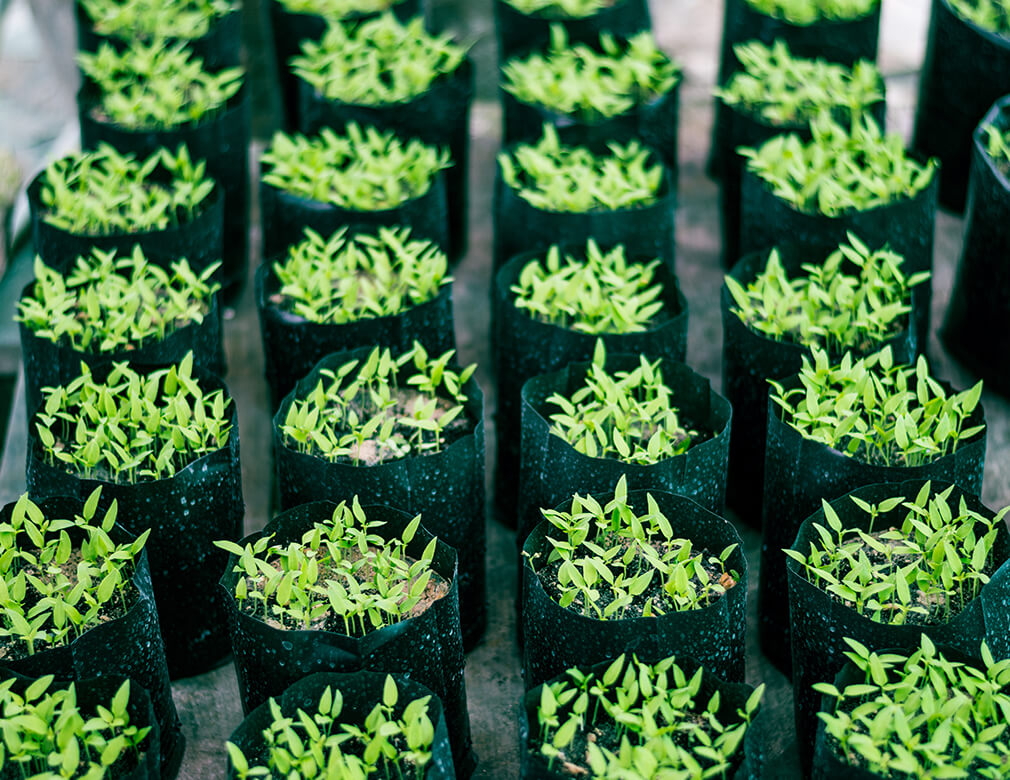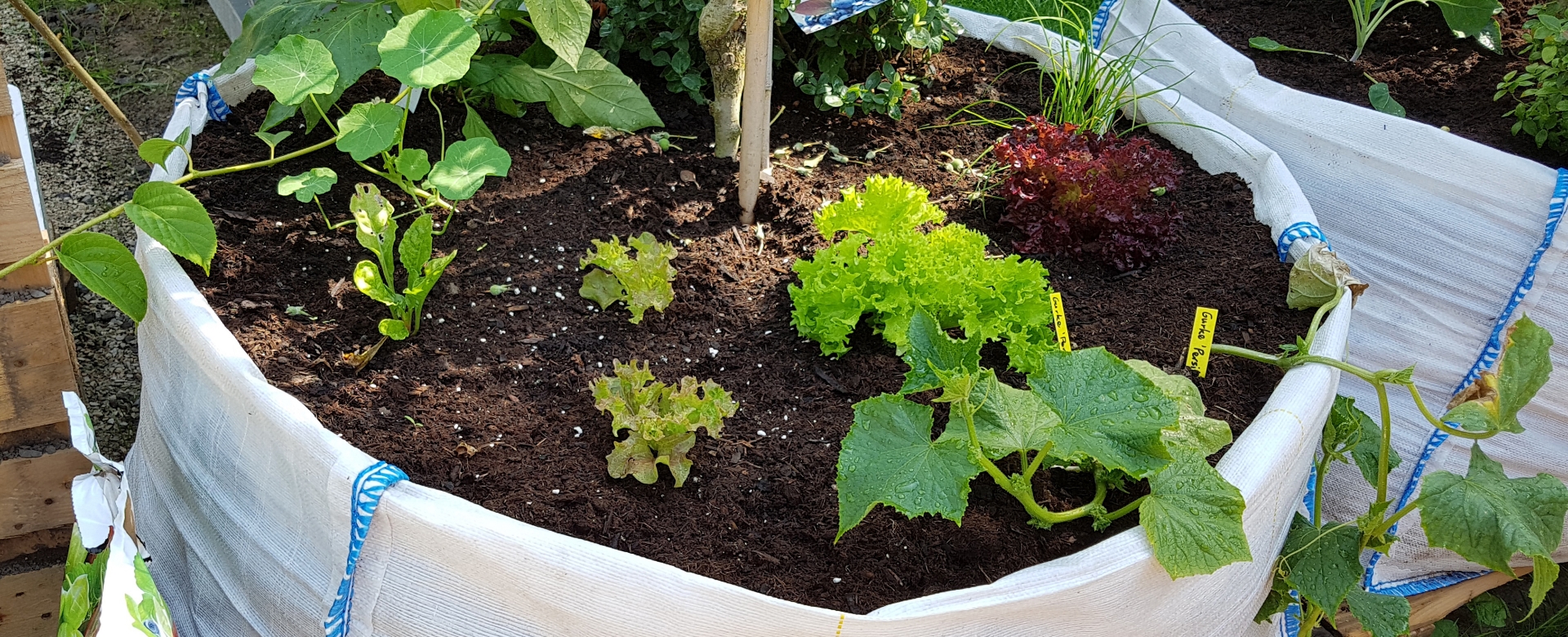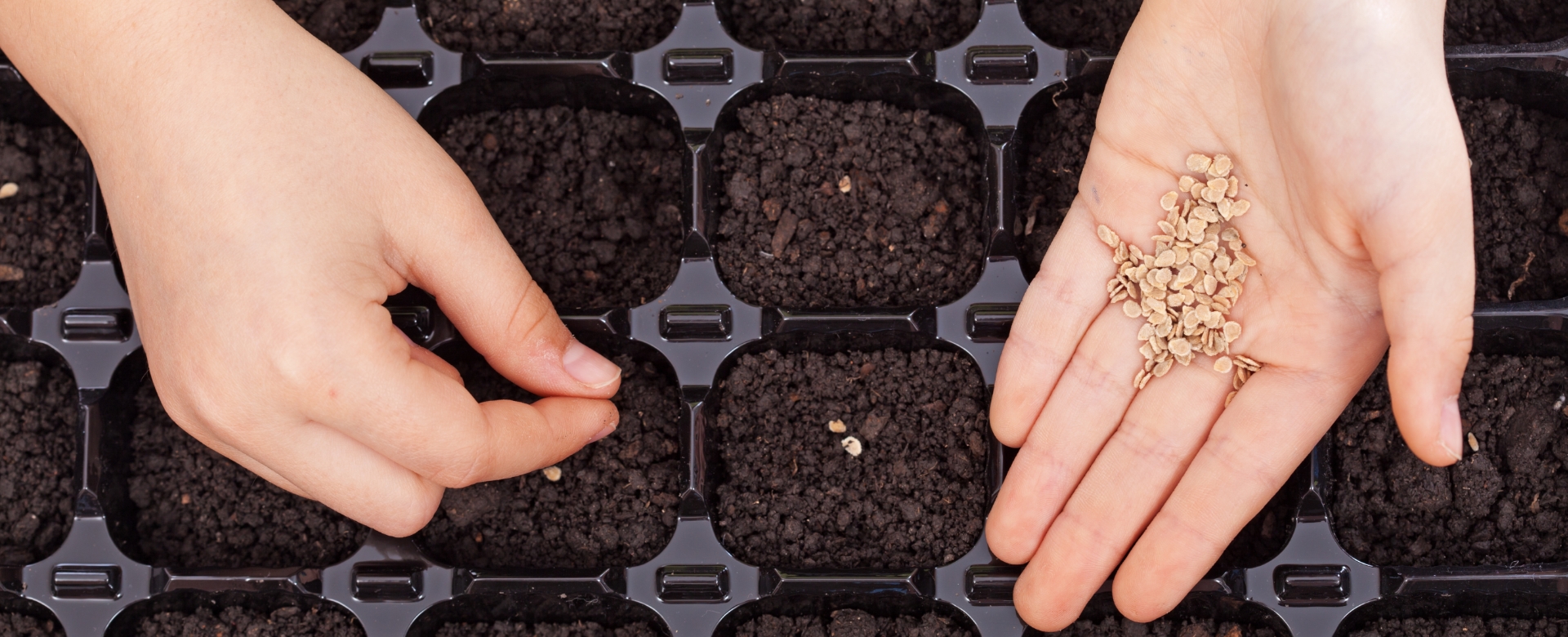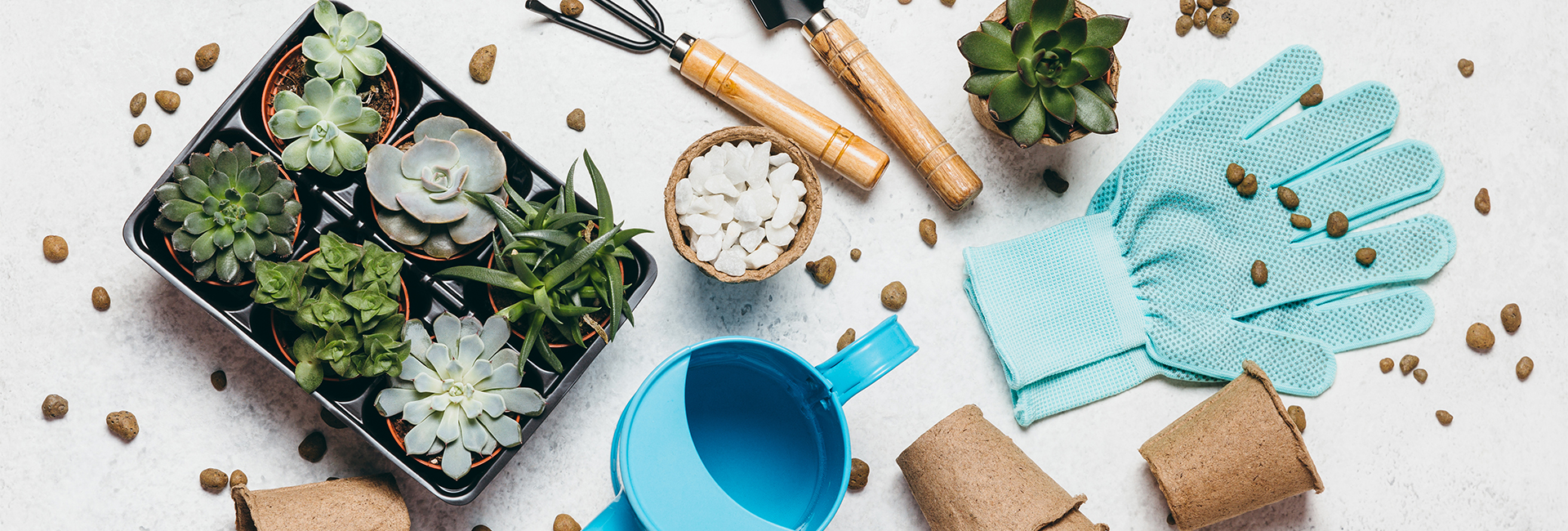Grow bags have become a multifaceted and efficient alternative to traditional pots and raised beds in gardening. They provide better space utilization, improved root health, and greater mobility. No wonder grow bags have become very popular and in demand when it comes to good landscaping ideas!
This blog post gives you the scoop on the basics of garden grow bags, their types and sizes, their benefits, and a guide on how to start using them. Whether you’re an experienced gardener or new to the game, this information will help you make the most of your grow bag gardening efforts.
What Are Grow Bags?
Grow bags are flexible containers typically made from breathable fabric or other durable materials. They can support any plant that doesn’t need deep roots.
Unlike plastic or clay pots, they are usually made from materials like felt or polypropylene, which provide great drainage and air circulation. This design helps create healthier roots by stopping root circling and allowing natural air pruning.
What Are Different Types and Sizes of Grow Bags?
Garden grow bags come in a variety of types and sizes to suit different gardening needs.
Here are the most common ones:
Fabric Grow Bags
Made from breathable fabric, these are the most popular type of garden grow bags. They provide excellent drainage and air circulation, which promotes healthy root growth and prevents issues like root rot. These bags are often reusable, and they come in various sizes to suit different gardening needs.
Plastic Grow Bags
Made from durable polyethylene, these grow bags are a more affordable option compared to fabric grow bags. While they offer less breathability, they are highly durable and can face harsh weather conditions. They are also easy to clean and can be reused multiple times, making them a practical choice for many gardeners.
Biodegradable Grow Bags
Made from natural materials like jute or coir, these grow bags are eco-friendly options that decompose over time. They are ideal for environmentally conscious gardeners who want to reduce their plastic use. As the plants grow, the roots can penetrate through the material, allowing for seamless planting directly into the ground without disturbing the root system.
- Small Grow Bags (1-3 gallons): Perfect for windowsills or small spaces.
- Medium Grow Bags (5-7 gallons): They provide enough space for roots and work well on patios or balconies.
- Large Grow Bags (10-20+ gallons): These spacious bags are perfect for creating mini-gardens and can support bigger plants, making them perfect for backyards or larger outdoor areas.
What Are the Benefits of Grow Bags?
Garden grow bags have several benefits compared to traditional gardening methods:
Space Efficiency
Grow bags help you make the most of limited gardening space. They can be placed on balconies, patios, or rooftops, making them ideal for urban gardeners.
Portability
Grow bags are lightweight and easy to move, letting you rearrange your garden as needed or bring plants indoors during bad weather.
Improved Drainage
The breathable fabric of grow bags ensures excellent drainage, preventing waterlogging and promoting healthier root systems.
Temperature Regulation
Grow bags help regulate soil temperature, keeping roots cooler in hot weather and warmer in cold conditions.
Attract Pollinators
When placed outdoors, grow bags can attract pollinators like bees and butterflies, which are crucial for plant reproduction.
Root Pruning
Grow bags naturally prune roots through air exposure, encouraging the development of a fibrous root system and preventing root circling.
Cost-Effective
Grow bags are generally cheaper than traditional pots and can be reused for multiple growing seasons.
Weed Control
Growing in bags reduces the chance of weed growth, as weeds are less likely to invade the confined space.
How to Start Gardening with Grow Bags
Starting with grow bags is easy and straightforward:
Choose the Right Size
Select a grow bag size that fits the type of plants you intend to grow. Larger plants like tomatoes or peppers will need bigger bags, while herbs or small flowers can thrive in smaller ones.
Select a Location
Find a suitable location with adequate sunlight, ideally 6-8 hours of direct sunlight per day, and protection from harsh weather such as strong winds or heavy rain. Ensure the spot is easily accessible for regular care.
Prepare the Grow Bags
Ensure the grow bags for gardening are clean and ready for use. Some may require soaking before planting to ensure they are pliable and free of chemicals. Check for drainage holes at the bottom; if they are absent, make a few to prevent waterlogging.
Choose the Right Soil
Opt for a high-quality potting mix that provides good drainage and aeration. Avoid using garden soil, as it may compact and hinder root growth. Fill the grow bags about three-quarters full, leaving room for watering and root expansion.
Planting
Plant your seeds or seedlings according to the specific requirements of each plant species. Follow the recommended planting depth and spacing to ensure proper growth and avoid overcrowding, which can lead to disease.
Watering or Self-Watering
Water the grow bags thoroughly, ensuring even moisture distribution. Be careful not to overwater, as this can lead to root rot. Consider self-watering grow bag, such as water reservoirs or wicking systems, to provide consistent hydration and reduce manual watering.
Fertilizing
Apply appropriate fertilizers to support plant growth. Use a balanced, slow-release fertilizer or organic options like compost or worm castings. Follow the recommended feeding schedule for each plant type, typically every 4-6 weeks, to avoid nutrient deficiencies or excesses.
Harvesting
Harvest your crops when they reach maturity, following best practices for each plant type. Use clean, sharp tools to avoid damaging the plants and encourage further growth. Regular harvesting can also promote more fruit or flower production.
What Can Be Grown in a Grow Bag?
Growing bags for plants are versatile and can accommodate a wide variety of plants. Here are the types of the garden grow bags and the answer of what to grow in grow bags:
1 Gallon Grow Bags
- Usage: Suitable for small plants or starting seedlings.
- Flowers: Marigolds, petunias, pansies
- Vegetables: Herbs (basil, parsley), lettuce, radishes
2 Gallon Grow Bags
- Usage: Ideal for small to medium plants.
- Flowers: Daisies, snapdragons, impatiens.
- Vegetables: Spinach, arugula, small pepper plants.
3 Gallon Grow Bags
- Usage: Suitable for larger herbs and small vegetables.
- Flowers: Zinnias, begonias, dwarf dahlias.
- Vegetables: Kale, chard, small tomatoes (cherry or grape).
5 Gallon Grow Bags
- Usage: Good for medium-sized plants.
- Flowers: Geraniums, hibiscus, small roses.
- Vegetables: Peppers, bush beans, determinate tomatoes.
7 Gallon Grow Bags
- Usage: Suitable for larger vegetables and small fruit bushes.
- Flowers: Lilies, daylilies, small shrubs.
- Vegetables: Eggplant, larger pepper plants, dwarf fruit trees.
10 Gallon Grow Bags
- Usage: Good for larger plants and small trees.
- Flowers: Hydrangeas, azaleas, larger perennials.
- Vegetables: Potatoes, larger tomatoes, zucchini.
15 Gallon Grow Bags
- Usage: Suitable for larger shrubs and medium trees.
- Flowers: Roses, large hydrangeas, butterfly bushes.
- Vegetables: Larger squash plants, cucumbers, dwarf citrus trees.
20 Gallon Grow Bags
- Usage: Ideal for small trees and large vegetables.
- Flowers: Large rose bushes, ornamental grasses.
- Vegetables: Large tomato varieties, melons, large squash.
25 Gallon Grow Bags
- Usage: Good for large shrubs and small fruit trees.
- Flowers: Rhododendrons, camellias.
- Vegetables: Large root vegetables, multiple pepper plants, blueberries.
50 Gallon Grow Bags
- Usage: Suitable for larger trees and extensive vegetable gardens.
- Flowers: Small trees, large ornamental shrubs.
- Vegetables: Large pumpkins, multiple tomato plants, corn.
100 Gallon Grow Bags
- Usage: Ideal for larger fruit trees and extensive vegetable production or extensive root systems.
- Flowers: Large trees, Giant Pumpkins, extensive flower arrangements.
- Vegetables: Multiple rows of vegetables, large root crops, sprawling plants like watermelons.
200 Gallon Grow Bags
- Usage: Suitable for very large plants and trees or community gardening.
- Flowers: Large trees, Large Community Garden Projects, Giant Vegetables.
- Vegetables: Best for extensive gardening setups, community gardens, and very large plant varieties.
Selecting the appropriate grow bag size for your chosen flowers or vegetables is crucial to maximize success and yield. By selecting the appropriate grow bag size, you can optimize the growth of your flowers and vegetables, ensuring they have enough space to thrive.
What Soil Should Be Used in Grow Bags?
The soil used in grow bags should be light, well-draining, and rich in organic matter. A high-quality potting mix is ideal. You can also create your own blend using compost, peat moss, and perlite. Ensure that the soil is loose and airy to promote healthy root growth. Fill the grow bag to about 80% capacity, leaving room for watering and root expansion.
Conclusion
Grow bags are a versatile, efficient, and cost-effective solution for modern gardening. They offer benefits like better drainage and root pruning, making them ideal for gardeners of all experience levels. By learning about the types and sizes of all-in-one grow bags and following best practices, you can create a thriving garden even in small spaces.
So, why wait? Start using grow bags today and see the difference in your gardening experience. Visit one of our locations to get started today!
FAQs
Usually, you don't need to put anything under grow bags. They are designed for good drainage and air circulation. The fabric lets excess water drain and provides air to your plants' roots.
However, depending on your needs, you can use a few things:
- Saucer and Pebbles: If you're worried about water drainage, especially on flat surfaces like patios, you can elevate the grow bag slightly with a saucer or pebbles.
- Broken Terracotta Pots: For better drainage, add broken terracotta pots or even a thin layer of pebbles at the bottom of the grow bag before adding potting mix. This is useful in rainy climates or with frequent overwatering.
The lifespan of grow bags depends on a few factors. Generally, they can last anywhere from 7 to 8 seasons with proper care. In some cases, they could last even longer.
Here are some factors that impact how long your grow bags will last:
- Material Quality: The type and quality of material used for the grow bag will directly affect its lifespan. Most grow bags are made from heavy-duty polyethylene or thick felt fabric. These materials are known to be durable and can withstand harsh weather conditions.
- Usage: How often you use your grow bags also plays a role in their lifespan. If you only use them during the growing season, they will have a longer lifespan compared to if you use them year-round.
- Care and Maintenance: Proper care and maintenance can greatly extend the life of your grow bags. This includes regular cleaning, avoiding overexposure to harsh sunlight, and repairing any tears or holes promptly.
Yes, grow bags can be a safe and effective way to grow vegetables.
Vegetable grow bags are made of breathable fabric, which allows for proper drainage and prevents over-watering. They also provide good air circulation for the roots of plants, promoting healthy growth.
However, it's important to note that not all grow bags are created equal. Some may contain harmful chemicals or additives that can leach into the soil and affect the safety of your vegetables.
It's important to research the materials used in your specific grow bag and make sure they are safe for growing edible plants. These can be the best grow bag garden ideas to start with.




